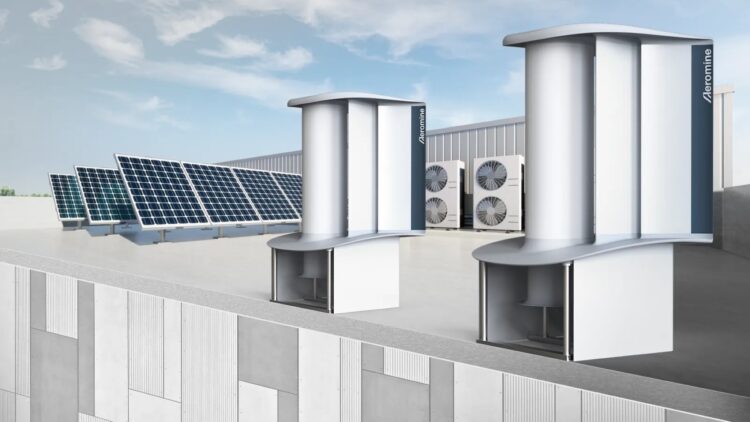Adopting renewable energy is crucial in the ongoing fight for the best clean energy. Large wind turbines with three massive blades are the typical solution for wind energy. Still, they have many disadvantages, such as noise emissions, threats to wildlife, and the requirement of significant land areas.
However, a new technology may turn the tables — motionless wind turbines. These new-fangled gadgets are expected to produce energy silently, effectively and without harming the natural world. This is how this new technology is poised to transform renewable energy.
A quiet revolution in wind energy: how motionless turbines are changing the game
First, it isn’t easy to get excited about the company Aeromine Technologies, which produces wind turbines that do not move. Unlike regular turbines, which are large structures with rotating blades, these are miniature, smooth structures with vertical wings that generate a vacuum.
This unique design enables them to develop electrical power from the wind behind an internal propeller, with no apparent mechanical part. Currently in use in Oxford, UK, at the BMW MINI production facility, this will help address two of the biggest challenges related to wind power — noise and wildlife impacts.
Without rotating blades, which create considerable risks for birds and other wildlife while generating power, it is a more ecological invention than a conventional one. It also suppresses the noise level familiar with significant wind power stations. This makes motionless wind turbines suitable for urban and residential places since traditional turbines are usually unsuitable for such areas.
How this motionless wind turbine complements solar power systems and improves efficiency
Another vital advantage of the motionless wind turbines is their compatibility with the functioning solar power systems. During the day, clean energy is produced on the roof of the MINI plant in Oxford with the help of a system of 11 thousand solar panels.
However, the use of solar energy is limited in the evening and during winter when the sun’s intensity is low. It is where the so-called motionless wind turbines come in. They utilise the wind at such times and, therefore, complement the electricity supply from solar energy, which is not as efficient during such periods.
The combination of solar and wind energy contributes to optimising renewable energy systems where buildings can produce clean electricity at all times, day or night, and in all seasons. For firms and homes with limited roof areas for installing solar panels, having wind turbines alongside the solar panels could be the new norm for energy self-sufficiency.
How would you feel if you had a wind power plant in your backyard – a still one that can generate 50KW of free electricity? These units are planned to be modular so that a large amount of energy can be produced in a small space. Regardless of its placement in a big business facility or the backyard of a private house, a nonworking wind generator can provide considerable energy savings.
Indeed, this technology might benefit people in regions with high wind potential but limited space for large wind turbines. The more people and companies install this technology, the more likely we may see a trend toward distributed generation, where more and more people can generate their electricity from renewable sources and rely less on dirty, conventional sources.
How motionless wind turbines could reshape energy systems and contribute to sustainability goals
The pilot at the BMW MINI plant in Oxford is only the start for motionless wind turbines. Thanks to the support from BMW’s Startup Garage, this new concept can be applied in the UK and other parts of Europe, particularly in significant flat-roofed structures such as warehouses, data centres and commercial offices.
The idea is to design an affordable and efficient solution that will work hand in hand with any renewable energy sources and contribute to the sustainability goals of enterprises. Motionless wind turbines present some hope for this problem.
They are quieter, safer for wildlife, and better suited to city environments. Together with other renewable forms of energy, they can contribute to speeding up the process of transition to a clean energy economy.

